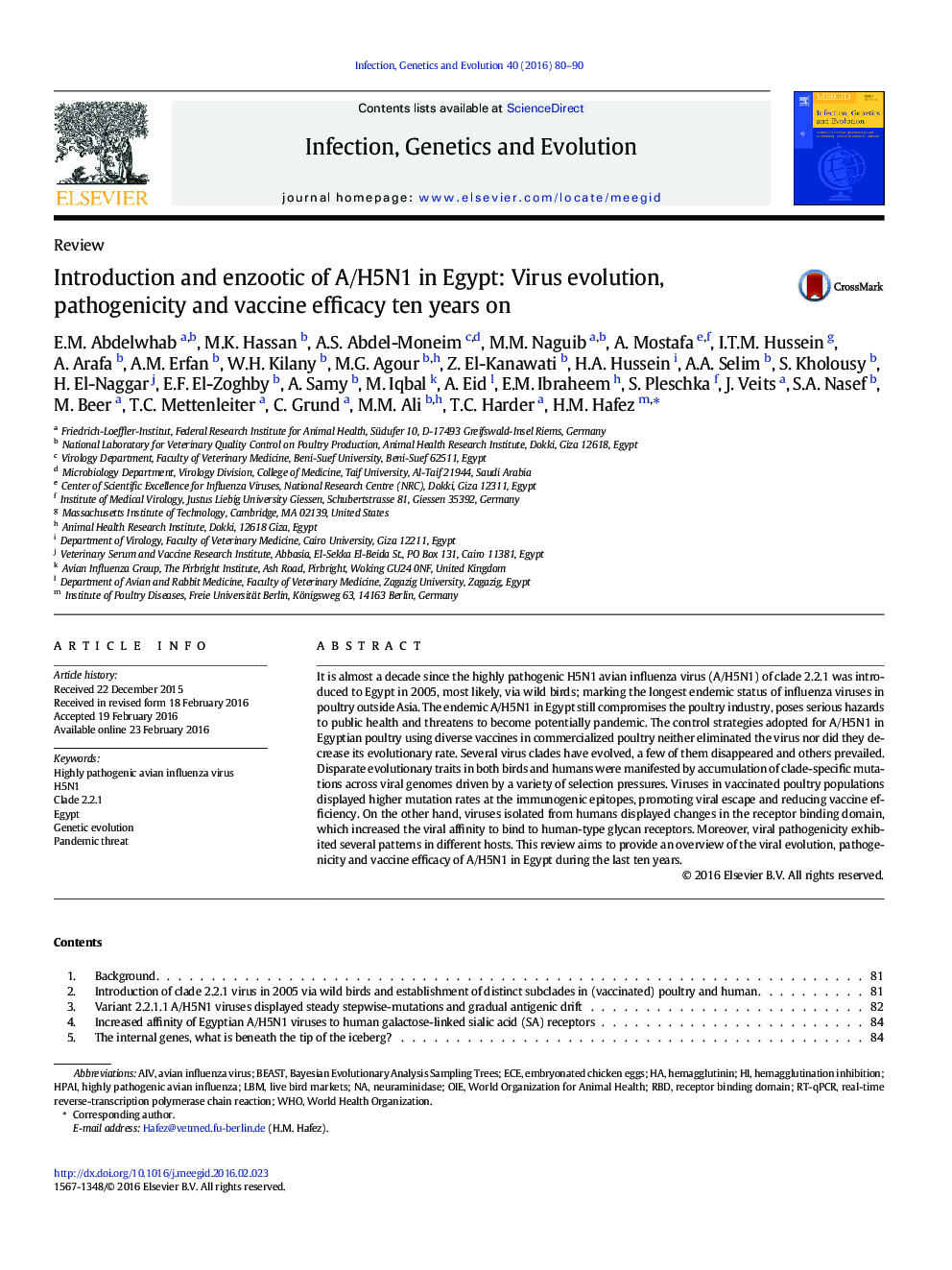| Article ID | Journal | Published Year | Pages | File Type |
|---|---|---|---|---|
| 5908283 | Infection, Genetics and Evolution | 2016 | 11 Pages |
â¢It has been a decade since H5N1 emerged in birds and humans in Egypt in 2005/2006.â¢Despite the control measures, the endemic virus continues to devastate the poultry industry.â¢Egypt is the country with the highest number of human infections with A/H5N1 worldwide.â¢Virus evolution, pathogenicity in different species and vaccine efficacy studies were summarized.
It is almost a decade since the highly pathogenic H5N1 avian influenza virus (A/H5N1) of clade 2.2.1 was introduced to Egypt in 2005, most likely, via wild birds; marking the longest endemic status of influenza viruses in poultry outside Asia. The endemic A/H5N1 in Egypt still compromises the poultry industry, poses serious hazards to public health and threatens to become potentially pandemic. The control strategies adopted for A/H5N1 in Egyptian poultry using diverse vaccines in commercialized poultry neither eliminated the virus nor did they decrease its evolutionary rate. Several virus clades have evolved, a few of them disappeared and others prevailed. Disparate evolutionary traits in both birds and humans were manifested by accumulation of clade-specific mutations across viral genomes driven by a variety of selection pressures. Viruses in vaccinated poultry populations displayed higher mutation rates at the immunogenic epitopes, promoting viral escape and reducing vaccine efficiency. On the other hand, viruses isolated from humans displayed changes in the receptor binding domain, which increased the viral affinity to bind to human-type glycan receptors. Moreover, viral pathogenicity exhibited several patterns in different hosts. This review aims to provide an overview of the viral evolution, pathogenicity and vaccine efficacy of A/H5N1 in Egypt during the last ten years.
Graphical abstractDownload high-res image (185KB)Download full-size image
